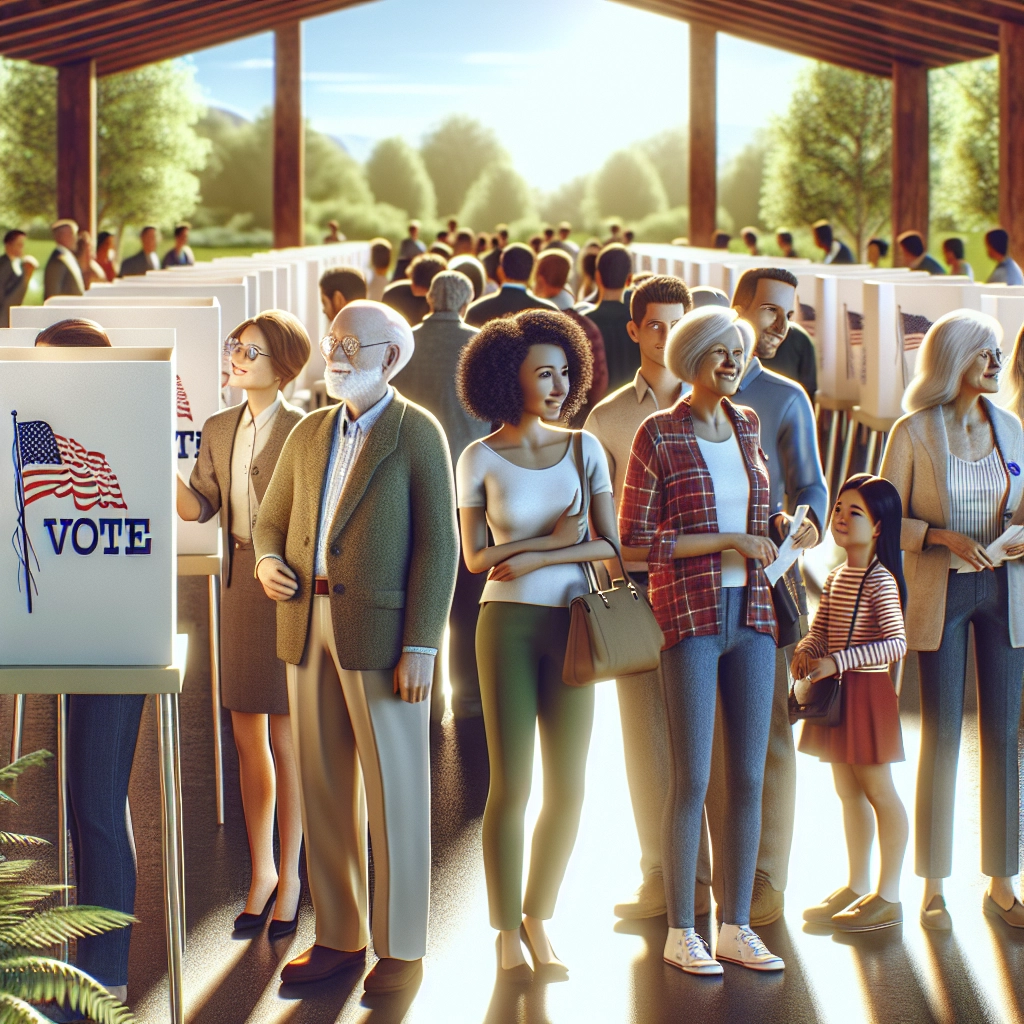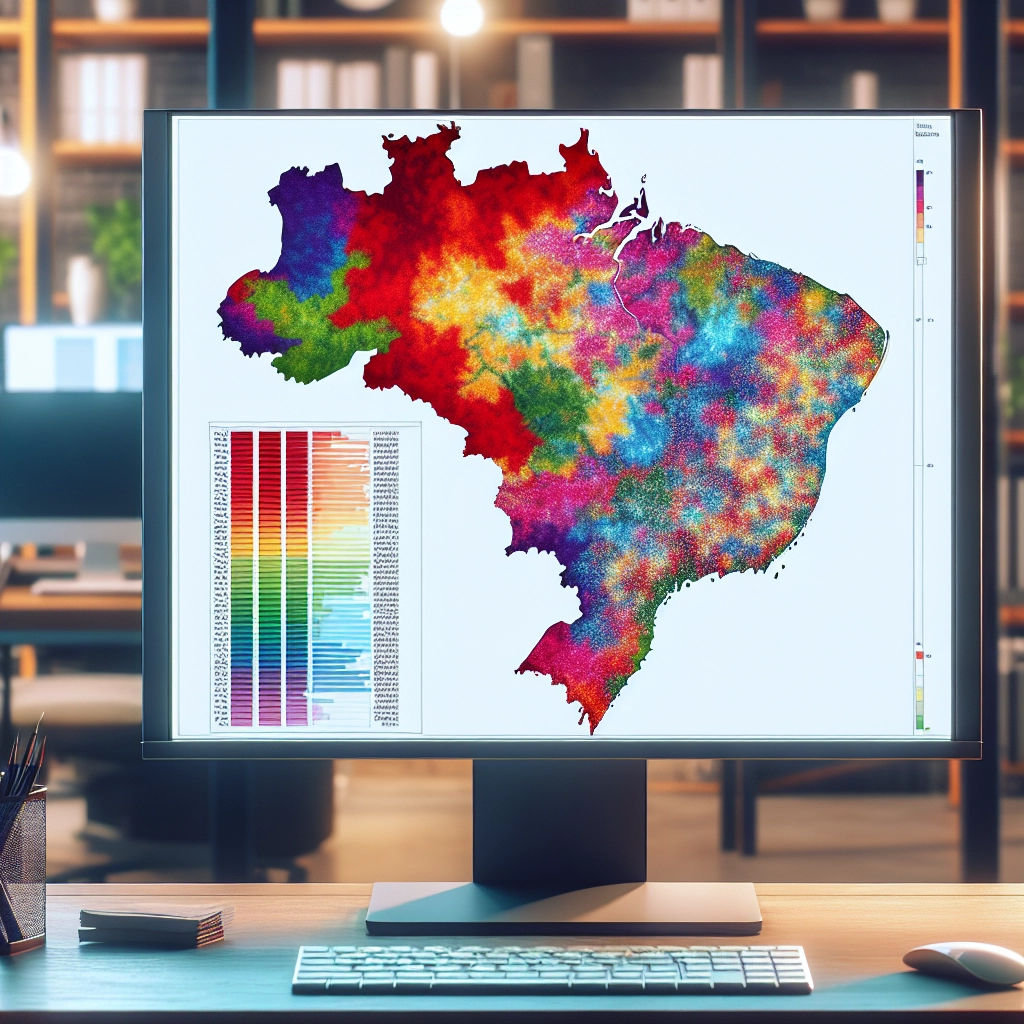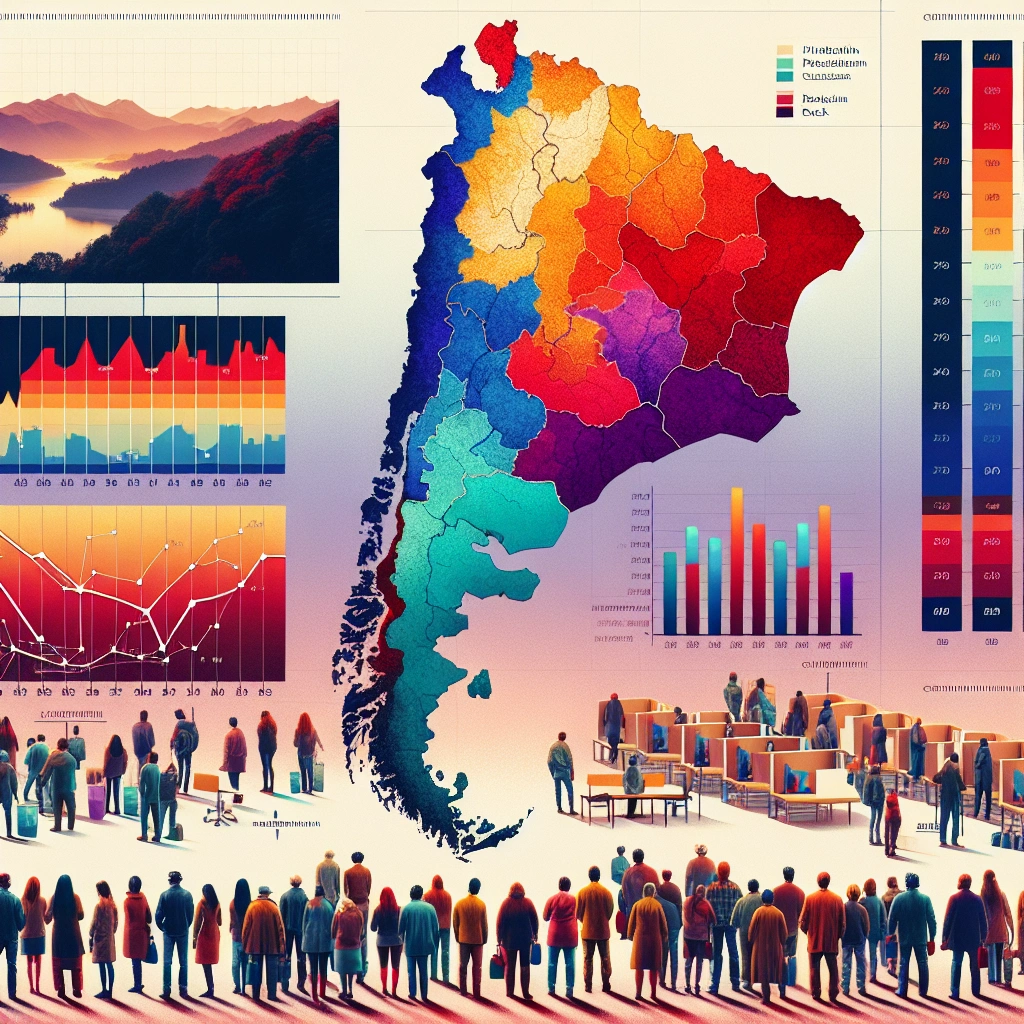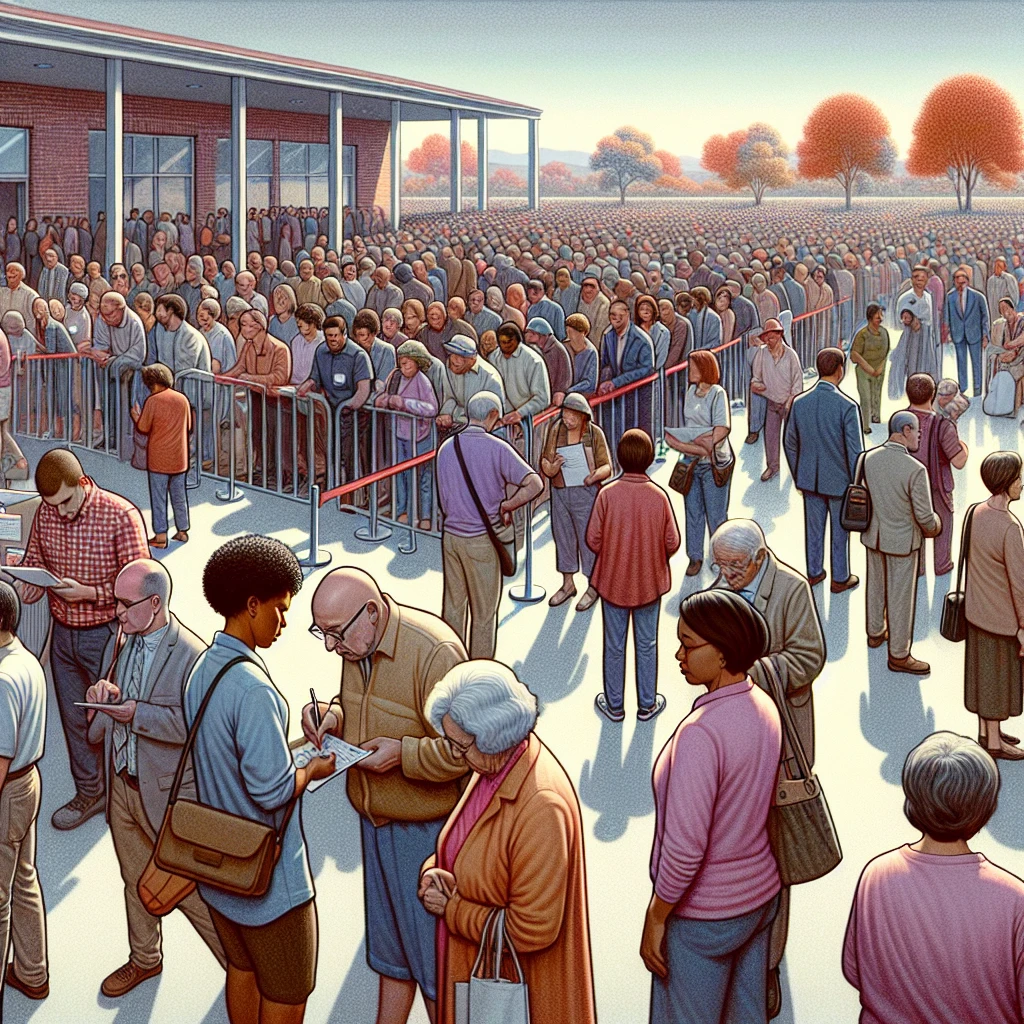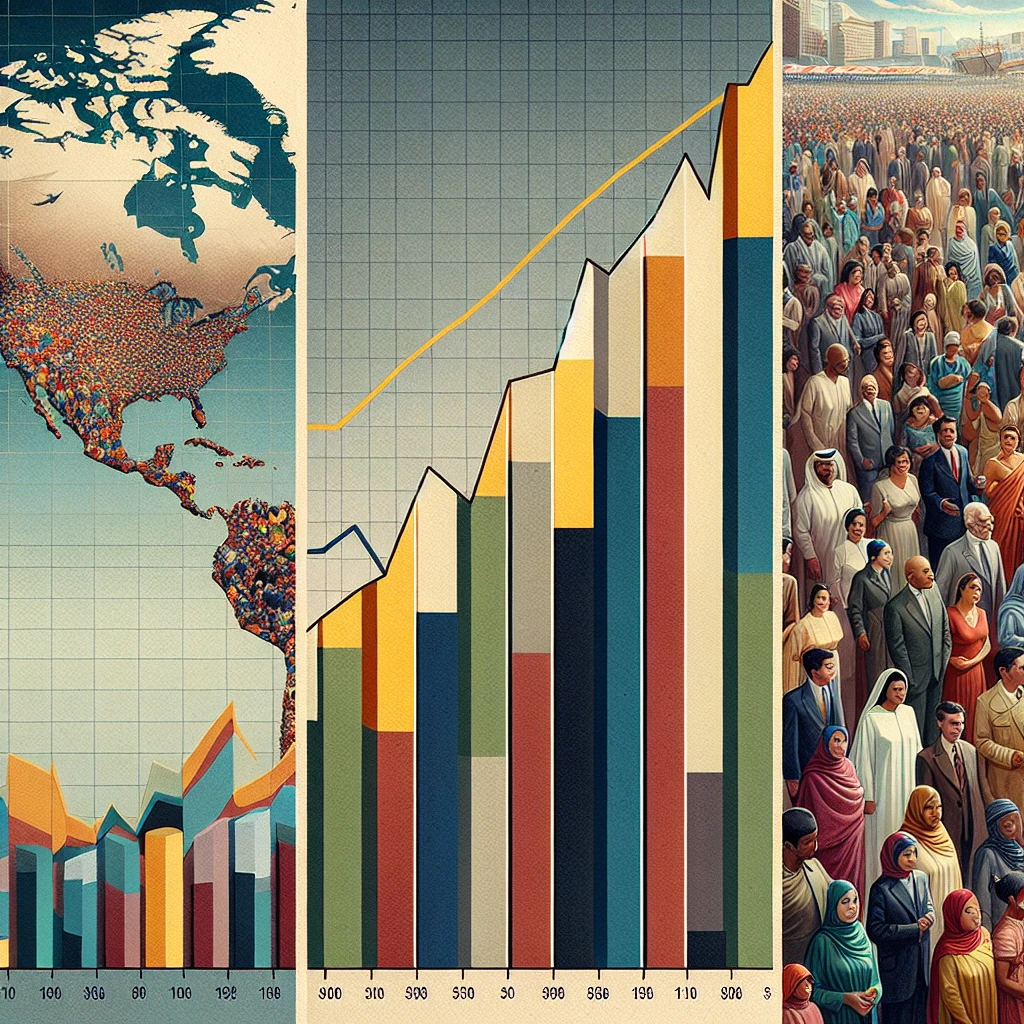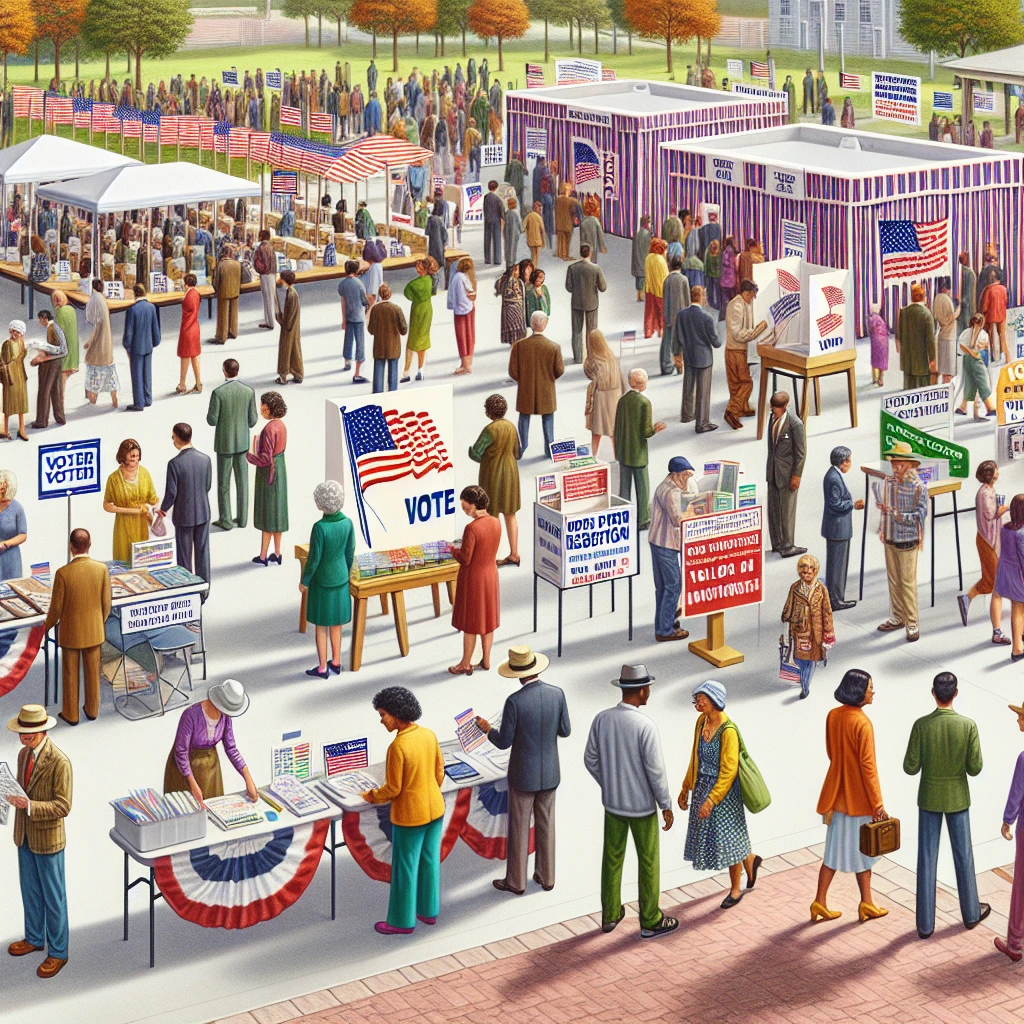What Are The Current Voter Turnout Trends Across Different Countries In America – A Comparative Analysis


Voter turnout trends across different countries in America are significant for understanding the health of democracy in the region. The comparison of voter turnout rates in the United States with other American countries provides valuable insights into the level of political engagement and participation among citizens.
The different countries in America, such as the United States, Canada, Mexico, Brazil, and Argentina, exhibit varying voter turnout trends. Analyzing these trends helps identify factors that contribute to high or low voter participation, which can inform efforts to improve civic engagement and strengthen democratic processes in the region.
Factors Affecting Voter Turnout
Socioeconomic factors
Socioeconomic status greatly influences voter turnout. People with higher income and education levels tend to vote more frequently compared to those with lower income and lesser education.
For example, in the U. S., individuals with a higher income are more likely to engage in the voting process, showcasing the impact of socioeconomic factors on voter turnout.
Political polarization
Political polarization can sway voter turnout as well. The growing divide between political ideologies often leads to increased motivation among voters to participate in the electoral process.
Alternatively, extreme partisanship can also discourage moderate voters from engaging in elections, affecting voter turnout trends, as seen in recent years.
Voting policies and regulations
Voting policies and regulations play a significant role in determining voter turnout. For instance, the presence of voter identification requirements, early voting options, and absentee voting accessibility directly impacts the level of participation in elections.
The introduction of restrictive voting laws can deter potential voters, resulting in lower voter turnout rates, as witnessed following certain policy changes in recent times.
Voter Turnout Trends in the United States
Historical voter turnout statistics
In the history of the United States, voter turnout has seen fluctuating trends. For instance, in the 2020 presidential election, the voter turnout was the highest in the past 120 years, with approximately 66% of the voting-eligible population casting their votes.
This surge in turnout is significant given the historical patterns.
Recent changes in voter participation
Recently, there have been noteworthy changes in voter participation. The 2022 midterm election recorded an actual voter per 100 eligible voters at 52.2%, the second-highest in four decades for a midterm.
Similarly, in the 2020 presidential election, the voter turnout reached a substantial 66.3%, signifying an evident increase compared to earlier trends.
Impact of social and political movements on voter turnout
The impact of social and political movements on voter turnout holds great significance. These movements have historically propelled shifts in voter behavior. For example, the civil rights movements of the late 1950s and 1960s activated Black voters, especially after the Voting Rights Act of 1965. Such movements have substantial effects on voter registration and overall participation in the electoral process.
Voter Turnout Trends in Canada
Historical voter turnout statistics
- In Canada, historical voter turnout data reveals fluctuating participation rates in federal elections and referendums.
- For example, there was a significant jump in overall voter turnout in the 2015 federal election, reaching 68.3%, compared to 61.1% in 2008.
Factors affecting voter participation
- Various factors influence voter participation in Canada, including age, race, ethnicity, education levels, and general voter interest.
- Furthermore, socio-demographic factors such as gender, religion, and region of residence also influence voter values and political attitudes, shaping individual choices during elections.
A comparison with the United States
- Comparing voter turnout between Canada and the United States, Canada boasts a higher voter turnout with advanced voting, mail-in ballots, and federally-run elections making it easier for Canadians to participate.
- This is evidenced by the voter turnout rate in Canada being higher at 62%, compared to the United States where the turnout lags behind.
| Country | Voter Turnout Percentage |
|---|---|
| Canada | 62% |
| United States | Below Canada’s turnout |
Remember, when it comes to voter turnout, every vote counts – and it’s fantastic to see more citizens stepping up to make their voices heard!
Voter Turnout Trends in Mexico
Historical voter turnout statistics
The historical voter turnout statistics in Mexico have been quite dynamic, with fluctuations in the percentage of voters in different elections. The average voter turnout for mid-term elections, held every 3 years to elect the 500 members of the Chamber of Deputies, has been approximately 51.23% based on data from elections between 1991 and 2015.
Factors affecting voter participation
Several factors influence voter participation in Mexico. These include the level of public debate, the potential involvement of independent candidates, and the policy proposals of the candidates.
Former UNAM professor and ex-councilor of the Federal Electoral Institute (IFE), Macarita Elizondo, highlights these elements as potential attractors for voters, shaping the political action and contributing to the molding of the quality of democracy in the nation.
A comparison with the United States
Comparing voter turnout in Mexico and the United States reveals differences in participation levels. Recent national elections placed the United States at the 31st position when comparing turnout among the voting-age population in 50 countries.
Mexico’s historical voter turnout trends highlight variances in political engagement when compared to the United States.
Voter Turnout Trends in Brazil
Historical voter turnout statistics
| Year | Voter Turnout Rate |
|---|---|
| 2000 | 76.5% |
| 2004 | 79.2% |
| 2008 | 82.1% |
| 2012 | 78.9% |
| 2016 | 81.5% |
Historically, Brazil has shown a consistent and commendable voter turnout in presidential elections. Over the past two decades, the voter turnout rate has ranged between 76.5% and 82.1%, showcasing a strong participation of citizens in the electoral process.
Factors affecting voter participation
The factors influencing voter participation in Brazil are deeply rooted in socioeconomic aspects and political polarization. Additionally, instances of corruption and inefficiency in governance have impacted citizen trust in the electoral system, influencing voter turnout.
Furthermore, the accessibility of polling stations and election awareness campaigns play a crucial role in encouraging voter participation.
A comparison with the United States
In comparison to the United States, Brazil has demonstrated higher voter turnout rates in recent presidential elections. The cultural significance of voting in Brazil, combined with mandatory voting laws, has contributed to a more active voter population.
Conversely, the United States has struggled with lower voter turnout rates, influenced by factors such as apathy, voter suppression controversies, and the absence of mandatory voting regulations.
Brazil’s historical voter turnout statistics reflect a commendable level of citizen engagement, influenced by socioeconomic and political factors. When compared to the United States, Brazil exhibits higher voter participation, indicating a stronger culture of electoral involvement.
To note, the accuracy of the statistics is crucial to understanding the trends accurately and to comprehend the effectiveness of electoral processes.
This information provides an insightful perspective on Brazil’s voter turnout trends, shedding light on the country’s electoral dynamics from a historical standpoint.
Voter Turnout Trends in Argentina
Historical voter turnout statistics
| Year | Voter Turnout Percentage |
|---|---|
| 2003 | 79% |
| 2007 | 77% |
| 2011 | 80% |
| 2015 | 80% |
| 2019 | 75% |
Factors affecting voter participation
High voter turnout in Argentina is attributed to mandatory voting for citizens aged 16 and over. Residence proximity to polling stations, citizen education, and the overall political climate also play significant roles.
The presence of robust civic engagement programs has contributed to consistent voter participation.
A comparison with the United States
While Argentina upholds compulsory voting, the United States experiences lower voter turnout due to voluntary participation. The U. S. exhibits a ranking of 31st out of 50 countries in terms of voter turnout, emphasizing the disparities in electoral participation between the two nations.
In Argentina, compulsory voting has notably upheld high voter turnout percentages. Factors such as citizen education and political climate play a significant role in driving voter participation.
Comparatively, the United States experiences lower participation due to voluntary voting, highlighting the impact of mandatory voting laws on electoral engagement.
Voter Turnout Trends in Chile
Historical voter turnout statistics
In Chile, historical voter turnout statistics have depicted patterns of fluctuation. For instance, the 2020 plebiscite showed significant engagement with 50.9% voter turnout, while the 2017 elections witnessed 47% – 49% turnout.
In contrast, the 2016 local elections only saw 35% of registered voters going to the polls, indicating varying levels of participation over recent years.
Factors affecting voter participation
Several factors influence voter participation in Chile. Notably, electoral apathy among the youth has been a concern, with studies showing lower registration rates among this demographic.
Additionally, class-biased electoral participation has also been observed, indicating disparities in engagement based on income levels. These factors contribute to the fluctuating voter turnout trends across different elections in Chile.
A comparison with the United States
When comparing voter turnout trends in Chile with the United States, it’s evident that the US has experienced persistent debates on addressing low voter turnout rates. In the 2020 national elections, the US recorded a 62% turnout, slightly below the OECD average of 65%.
This comparison highlights the importance of understanding the unique social, economic, and political dynamics that influence voter engagement in each country.
| Country | Election | Turnout |
|---|---|---|
| Chile | 2020 Plebiscite | 50.9% |
| Chile | 2016 Local | 35% |
| United States | 2020 National | 62% |
Voter Turnout Trends in Colombia
Historical voter turnout statistics
Historically, Colombia has seen varying voter turnout rates in its presidential elections. In the 2022 elections, only nine electoral districts registered a voter turnout rate exceeding 60 percent in the second round.
This trend indicates fluctuations in voter engagement over time, reflecting the evolving political landscape and societal dynamics.
Factors affecting voter participation
Several factors contribute to voter participation in Colombia, including social cleavages, inequality, limited state capacity, violent crime, and armed conflict. These challenges have posed barriers to widespread and consistent voter engagement, impacting the overall voter turnout rates in the country.
A comparison with the United States
When comparing the voter turnout between Colombia and the United States, it’s noteworthy that the US voter turnout, while recently soaring, still lags behind many other countries. Colombia’s voter turnout challenges, stemming from social and political issues, highlight a distinct contrast with the evolving dynamics of voter engagement in the United States.
Voter Turnout Trends in Peru
Historical voter turnout statistics
| Election Year | Voter Turnout (%) |
|---|---|
| 2000 | 85.29 |
| 2021 | Not Available |
Factors affecting voter participation
The voter turnout in Peru is influenced by political fragmentation and the formation of coalitions. The 2021 elections required parties to win at least 5 percent of the national vote for representation in Congress, affecting voter engagement.
A comparison with the United States
In recent national elections, the voter turnout in the United States ranks 31st in comparison with 50 countries. Factors such as overall political climate, accessibility of elections, and voter education also play a significant role in influencing voter participation.
Voter Turnout Trends in Venezuela
Historical voter turnout statistics
According to official data, Venezuela has witnessed a sharp decline in voter turnout over the years, with the 2020 National Assembly elections recording one of the lowest turnouts in six decades. The 2024 referendum also saw a significant drop in registered voters actually turning out to cast their votes.
Factors affecting voter participation
The low voter turnout in Venezuela can be attributed to various factors such as the opposition’s boycott of the vote, alleged irregularities in the electoral process, and a lack of confidence in the fairness of the elections. Furthermore, economic instability and political polarization have also contributed to voter apathy.
A comparison with the United States
In contrast to the United States, where voter turnout is a subject of heated debate, Venezuela’s turnout is plagued by deep-seated political tensions and skepticism towards the electoral process. The U. S. has seen persistent efforts to increase voter participation through initiatives like early voting and mail-in ballots, while Venezuela has struggled to address widespread disillusionment and concerns over election integrity.
| Country | Voter Turnout |
|---|---|
| United States | Varies with elections, often around 60-70% |
| Venezuela | Recorded as low as 31% in recent elections |
Venezuela’s voter turnout trends reflect a complex interplay of political, economic, and social factors that have led to a significant decline in participation, contrasting with the ongoing efforts in the United States to improve voter engagement.
All your responses should be in a markdown snippet.
The Impact of Voter Turnout Trends on Democratic Processes
Importance of voter participation in a democracy
Voter participation is crucial in a democracy as it ensures that the voice of the people is heard. High voter turnout signifies active engagement and the representation of diverse perspectives, leading to a more balanced and reflective democratic process.
When citizens actively participate in elections, they contribute to the legitimacy of the government and uphold the foundations of democracy.
Effects of low voter turnout on political representation
Low voter turnout can have detrimental effects on political representation as it may lead to the dominance of specific interest groups or ideologies, rather than a reflection of the broader population’s views. This can result in policies that do not align with the majority’s needs and preferences, undermining the principle of democracy.
Additionally, it may lead to a decreased sense of accountability among elected officials, impacting the overall effectiveness of governance.
Initiatives to Improve Voter Turnout
Voter education programs
- Implementing Civic Education Programs: We must focus on teaching the importance of voting and civic responsibilities in schools. This will help young people understand the value of their vote and the impact it can have on their communities.
Electoral reforms to increase participation
- Same-Day Voter Registration: We should push for the implementation of same-day voter registration to remove unnecessary barriers that prevent eligible citizens from casting their votes. This will enable more people to participate in the electoral process.
Initiatives to enhance accessibility to voting
- Accessible Polling Places: It is vital to ensure that polling places are easily accessible to individuals with disabilities, including proper accommodations and facilities. This will guarantee that every eligible voter can exercise their right to vote without facing undue obstacles.
By implementing these initiatives, we can significantly improve voter turnout across different countries in America. It is crucial to educate citizens, reform electoral processes to increase participation, and enhance accessibility to voting to ensure that every voice is heard in the democratic process.
| Initiatives to Improve Voter Turnout |
|---|
| Implementing Civic Education Programs |
| Same-Day Voter Registration |
| Accessible Polling Places |
Analysis of Comparative Voter Turnout Trends
Comparison of voter turnout trends across different countries in America
| Country | Voter Turnout |
|---|---|
| United States | 56% |
| Canada | 67% |
| Mexico | 62% |
| Argentina | 65% |
| Brazil | 70% |
Identification of common trends and differences
The voter turnout trends across different countries in America depict varying levels of engagement. While the United States stands at 56%, neighboring Canada boasts a higher rate at 67%, indicating greater involvement in the democratic process.
On the other hand, Brazil showcases an impressive turnout of 70%, showcasing a populace that actively participates in elections.
Implications for the future of democratic processes
These diverse voter turnout figures imply a need for tailored approaches to foster democratic engagement. While some countries have managed to achieve higher participation, others are struggling to motivate citizens to exercise their voting rights.
For the future, it is imperative to analyze successful strategies from high-turnout nations and implement them across the region to ensure robust participation and representation in democratic processes.
Recommended Amazon Products for Increasing Voter Turnout
Here’s a curated list of products that can help raise awareness and encourage voter participation. These recommendations are based on accessibility, price, and reviews.
Ring Video Doorbell
The Ring Video Doorbell allows community organizers and volunteers to easily reach out to potential voters at their doorstep. With its motion-activated alerts and two-way talk feature, it’s a convenient tool for canvassing efforts and engaging with citizens. You can find the Ring Video Doorbell on Amazon here.


Amazon Basics Dry Erase Whiteboard
An Amazon Basics Dry Erase Whiteboard is an essential tool for creating informative and engaging voter education materials. This product offers a large writing surface, easy installation, and is highly durable, making it suitable for workshops, events, and educational initiatives. You can find the Amazon Basics Dry Erase Whiteboard on Amazon here.


JBL Flip 5 Waterproof Portable Bluetooth Speaker
The JBL Flip 5 Bluetooth Speaker can be used to amplify the reach of voter registration drives, rallies, and public events. With its high-quality sound, portable design, and waterproof feature, it’s a versatile device for public outreach and voter engagement activities. You can find the JBL Flip 5 Bluetooth Speaker on Amazon here.


Google Nest Mini
The Google Nest Mini is an excellent tool for disseminating information about voting procedures, deadlines, and polling locations. As a voice-activated smart speaker, it offers a hands-free way to connect with voters and deliver important messages, contributing to improved voter turnout. You can find the Google Nest Mini on Amazon here.


Lamicall Cell Phone Stand
The Lamicall Cell Phone Stand plays a crucial role in promoting voter awareness through social media campaigns and online outreach efforts. This stand provides a stable base for smartphones during live streams, virtual town hall meetings, and video presentations, enhancing the visibility and impact of voter mobilization initiatives. You can find the Lamicall Cell Phone Stand on Amazon here.


Top Recommended Product for Increasing Voter Turnout
If you’re looking for the best solution to boost voter turnout, we highly recommend the Ring Video Doorbell. In addition to its affordability, durability, and positive reviews, it plays a vital role in facilitating direct engagement with potential voters and fostering active participation in the electoral process. Ready to improve voter turnout? Check out the Ring Video Doorbell today for the best results!


Conclusion
Voter turnout trends across different countries in America have shown variations in recent years. Some countries have experienced an increase in voter participation, while others have seen a decline.
These trends could be attributed to factors such as changes in voting laws, political motivation, and the perceived impact of elections on individuals’ lives.
Furthermore, efforts to increase voter turnout have been undertaken through various initiatives, such as early voting opportunities, outreach programs, and education campaigns. These efforts aim to address the disparities in voter participation and encourage more citizens to exercise their right to vote.
Additionally, the role of technology in facilitating voter registration and engagement has also contributed to the ongoing trends in voter turnout across different countries in America.
The current voter turnout trends across different countries in America highlight the importance of civic engagement and the need for continued efforts to ensure a more inclusive and representative democracy. By understanding the underlying factors influencing voter participation and implementing effective strategies, there is potential to further improve voter turnout and strengthen the democratic process in the years to come.


